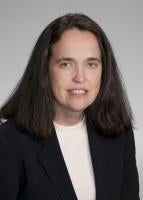On September 1, 2020, the Federal Energy Regulatory Commission (“FERC” or “Commission”) issued an order breaking with decades of precedent regarding how it will determine whether a renewable resource is eligible for certification as a qualifying small power production facility (“QF”) pursuant to the Public Utility Regulatory Policies Act of 1978, as amended (“PURPA”).[1] The result of the Commission’s order is that renewable resources will no longer have the ability to qualify for QF status by voluntarily limiting their output to comply with the 80 MW cap on small power production facilities. Commissioner Richard Glick dissented and we anticipate that parties to the proceeding will seek rehearing and possibly appeal the order to federal court. Bracewell will keep you updated on significant PURPA developments.
PURPA and the Commission’s implementing regulations limit a small power production QF’s capacity to a “power production capacity” of 80 MW.[2] When evaluating whether a facility complied with this requirement, the Commission focused on the “maximum net output of the facility that can be safely and reliably achieved under the most favorable operating conditions likely to occur over a period of several years.”[3] In practice, the Commission’s focus on the maximum net output of the facility—rather than the installed capacity of the equipment at the site—has meant that developers have been able to qualify for QF status by voluntarily installing control systems or taking other steps to limit the sustainable net output of the generation facility in any given hour to 80 MW or less, even if the installed generation capacity of the facility exceeded the 80 MW cap.
In the proceeding resulting in the September 1 Order, the Commission considered whether a combined solar and storage facility owned by Broadview Solar, LLC complied with the 80 MW cap. The facility at issue consisted of a 160 MW solar array and a 50 MW battery storage system that would connect to 82.5 MW DC-to-AC invertors. Because any energy produced by the solar array and battery storage system would need to be converted from DC power to AC power prior to the injection in the grid, the maximum achievable output from the facility in a given hour was 82.5 MW. Thus, even though the installed capacity of the solar array and storage system exceeded the 80 MW cap, Broadview explained that the net output of the facility, taking into account losses and station load, could never exceed 80 MW.[4]
The Commission rejected Broadview’s arguments, however, and found that Broadview’s facility cannot meet the requirements for QF status. The Commission acknowledged that previous orders had allowed “facilities with greater power production capacities to be certified as QFs when the net output was no more than 80 MW.”[5] The Commission found, however, that this interpretation was inconsistent with the plain language of PURPA limiting the “power production capacity” of QFs to 80 MW. While the Commission recognized that the inverters were only capable of converting 80 MW into AC power, the Commission observed that this was merely a “conversion limit” and that the solar array alone had the capability to produce 160 MW of DC power. According to the Commission, “[u]tilizing inverters to limit the output of an otherwise above-80 MW power production facility to 80 MW is . . . inconsistent with the type of facility that Congress specified can qualify as a small power production facility (i.e., a facility sized 80 MW or less).”[6] For that reason, the Commission found that Broadview’s facility did not meet the requirements to qualify as a QF.
Recognizing the potential impact of its abrupt change in policy, the Commission explained that its finding would only be applied prospectively.[7] As a result, the Commission’s order will not affect “QFs that have self-certified [through the submission of FERC Form 556] or have been granted Commission certification prior to the date of” the Commission’s order, even if the self-certification filed by the facility “included adjustments for inverters or other output-limiting devices to calculate its maximum net power production capacity as 80 MW or less.”[8]
The Commission’s order represents a marked departure from Commission precedent that effectively eliminates the ability of renewable resources to meet the QF certification requirements by limiting the output of their facility so that it does not exceed 80 MW.[9] Although the Commission indicated that it would only apply this determination prospectively, the Commission’s decision could have significant implications for projects that are in the final stage of development, but have not yet filed a notice of self-certification to FERC.[10] The Commission emphasized, for example, that the owner of a facility with a legally enforceable obligation could not benefit from “grandfathered” status for the facility in the absence of a self-certification Form 556 submittal or FERC order granting certification before September 1, 2020.[11] Also, the Commission’s order does not address whether the Commission would be willing to revisit the QF status of facilities that submit a notice of re-certification in order to report a change in the facts reported in its initial certification, including upgrading, modernizing or retrofitting existing facilities.[12] The Commission did, however, clarify that load and line losses could continue to be factored in when measuring a facility’s 80 MW maximum net power production.
The Commission expressly declined to address how the capacity of an energy storage system should be taken into account for QF purposes – an aspect of the proceeding that many were following.[13] In a number of recent proceedings, companies developing renewable resources combined with battery storage have taken the position that the capacity of a battery storage system should not be included when calculating the net capacity of the facility on the basis that the storage does not represent an additional source of independent power generation and merely allows the facility to shift the time of production; in those cases, however, the QF certification application was withdrawn before FERC made a substantive determination on the issue.[14] Broadview took a similar position in this proceeding, arguing that aggregating the combined capacity of the solar array with the energy storage system would artificially inflate the aggregate capacity of the facility components. The Commission found that it did not have to address that issue in this case because the 160 MW solar array on its own without considering the energy storage facilities was already double the 80 MW cap.[15]
[1] Broadview Solar, LLC, 172 FERC ¶ 61,194 (2020).
[2] 16 U.S.C. §§ 796(17), 824a-3; 18 C.F.R. § 292.204.
[3] Occidental Geothermal, Inc., 17 FERC ¶ 61,231, at 61,445 (1991).
[4] Id. at P 3.
[5] Id. at P 21.
[6] Id. at P 25.
[7] See id. at P 27.
[8] Id.
[9] See id. at P 27.
[10] Id.
[11] Id.
[12] See id.
[13] Id. at P 21 n. 57.
[14] See, e.g., NorthWestern Corp., 168 FERC ¶ 61,049 (2019).
[15] Broadview, 172 FERC ¶ 61,194, at P 21 n. 57.





 />i
/>i

